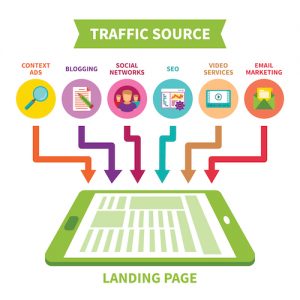— August 1, 2018

StartupStockPhotos / Pixabay
Despite dedicating many resources toward training and development, many organizations still find themselves short-handed when it comes to effective leadership. Stunningly, a Harvard Business Review survey showed that only 15% of North American companies claimed to have a pipeline of candidates ready to assume key leadership roles.
Their fears are only made worse by the fact that the average employee remains in one job for only 4.4 years; millennials are even less tied to their employers, with less than 10% of them expecting to remain in a position longer than three years. With millennials making up a larger percentage of the workforce every year, organizations are under tremendous pressure to reevaluate their succession strategies to assure smooth leadership transitions.
Fortunately, there are a number of steps companies can take to ensure that their succession situations are resolved as smoothly as possible. Here are a few key factors organizations should take into consideration when establishing their succession strategies:
1: Adopt a Multi-level Perspective
The vast majority of discussions about succession planning focus on executive level replacement. While changes among top leadership can certainly have a major impact on an organization, employee movements and departures at any level can create substantial ripple effects capable of disrupting business operations. It’s no surprise, then, that a 2013 Mercer study estimated these unfilled and unplanned vacancies cost companies up to 50% more in lost revenue than the salary of the job itself.
While it might not sound like a significant setback to lose a mid-level sales account manager, for instance, other employees must divert a portion of their time and energy from their tasks to handling the vacant position’s portfolio until a replacement can be found. More importantly, losing mid-level talent can quickly deplete the feeder pool of potential candidates for high-level positions. If the company has not considered how to continually replenish this supply of aspiring leaders, the effects of disruption can have knockdown effects throughout the organization.
Companies can take steps to avoid this problem by adopting a multi-level succession plan that takes the entire organization into account. Creating a roadmap that identifies both leadership positions and the potential candidates who might eventually fill them makes it easier to anticipate the impact of changes as people move throughout the organization. It also highlights opportunities for additional forms of development like mentorship programs and coaching that better prepares people to navigate temporary gaps in leadership during a succession situation.
2: Establish A Success Profile
Once an organization has identified strategic positions that require formal succession planning, it must determine the relevant competencies for that position. Competency models are one of the most effective tools for identifying and developing the characteristics an effective leader should possess. A good competency model or success profile can save both time and money by helping companies accurately identify high-potential candidates more efficiently.
Associating leadership competencies with key positions helps an organization’s development efforts by establishing the criteria employees must meet and the skills they must acquire to advance their careers. As a future-focused tool, the success profile not only measures how well someone may fit into a specific role but also considers how that role may evolve over time. If the strategic goals of the company are expected to shift significantly in the next five years, for instance, it makes sense to ensure leadership candidates develop skills and competencies that will be most relevant by the time they’re ready for promotion.
While a competency model isn’t a foolproof tool and should not be viewed as an inflexible checklist, it does provide a useful guide for determining which candidates are best suited for a position in a succession situation.
3: Assess Early, Often, and Well
Part of the reason so few companies believe they have good leadership candidates internally is that they don’t always do a good job identifying high-potential employees.
Many organizations make the mistake of assuming that high performing employees are also the best leadership candidates, but this isn’t always the case. They base their hiring and promotion decisions on categories such as productivity, seniority, and likability rather than a leadership success profile. In fact, only about one in seven high performing employees are also high-potential leaders.
These candidates are frequently not identified early enough to set them on a path to leadership development. It is critical that organizations take active steps to find employees who demonstrate the desire, skills, and commitment to lead before they’re actually asked to step into a leadership role. These qualities are easily missed without effective assessment strategies that emphasize multi-source feedback and objective data.
4: Target Development to Better Prepare Candidates
Once an organization has established competency models for its leadership positions and identified high potential candidates among its employees, it can design targeted training and development programs that are specific to the needs of candidates to prepare them for advancement.
Any successful succession program should consist of three key elements:
- Measurability: Using competency models as a guide, succession plans should be able to identify a variety of ways to quantify the return on investment (ROI) of leadership development. If a training program cannot provide measurable results, it will be difficult to determine whether or not it was effective in preparing candidates for leadership positions. In most cases, implementing an ineffective training program can be just as damaging as not having one in the first place because it will frustrate employees and lead to expensive hiring mistakes.
- Practical Application: Training programs need to emphasize how theoretical concepts can be converted into everyday practice. Many of the skills leaders need to be effective are subjective and soft skills that are not always easy to deploy out of context. Training simulations and interactive assessments through e-learning and gamification tools allow potential leaders the opportunity to develop the skills they will need in their future positions. Special work assignments that require candidates to take on tasks outside the scope of their current position can also provide valuable on-the-job experience and give them a chance to put what they’ve learned to the test.
- Time Sensitivity: Leaders aren’t created overnight, but they also shouldn’t take a lifetime to build. A good development program focuses on achieving specific (and often measurable) goals to keep learning on a strict timeline. Targeted projects, self-guided learning modules, and structured webinars all provide leadership candidates with a variety of resources that they can utilize in a timely manner that helps to keep their development on track.
5: Be Flexible
Circumstances can change quickly, especially for today’s organizations. Shifting business priorities have the potential to redefine what companies need from their leaders. Over time, leadership competencies will need to be revisited, existing positions may be eliminated or consolidated, and new or critical positions may be created to address new business challenges.
A comprehensive succession plan needs to be flexible enough to account for these shifting parameters. Just because a leadership position has changed or is eliminated, for example, doesn’t mean that potential candidates who would have been well-suited for that role won’t be valuable elsewhere. Organizations need to consider how to adapt its development programs according to the needs of the succession plan whenever the plan is adjusted based on the latest demands and pressures.
Establishing a more comprehensive succession plan that extends beyond the executive level allows for smoother transitions that minimize the potentially damaging costs of sudden changes. It also makes succession more efficient by actively developing its high potential employees to step into existing leadership roles when the opportunity arises. By taking this long-term, multilevel view of succession, companies can create a reliable pipeline of qualified leadership candidates while protecting themselves from the uncertainties of change.
Business & Finance Articles on Business 2 Community
(83)









